by Phil Bergman
AKA EUROPEAN FAN PALM
A GREEN TO BLUE GREEN, SUCKERING FAN PALM THAT LOVES HEAT AND SUN

ABOUT THIS ARTICLE:
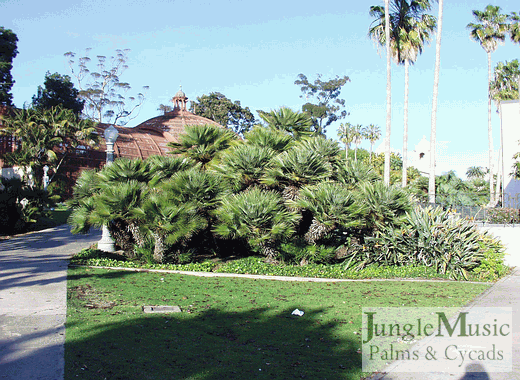
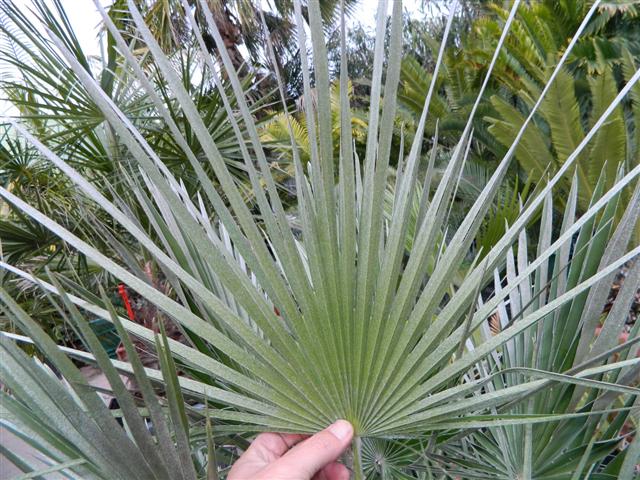
This article introduces the Mediterranean Fan Palm, Chamaerops humilis, a suckering fan palm that is native to Southern Europe along the Mediterranean coast. Habitat distribution spreads from Spain and up through France, across to Italy and Malta and then across toward southeastern Europe. Chamaerops humilis is known for typically not getting too tall and often being as wide as it is tall. It loves full, hot sun and is extremely cold hardy, down to about 15 degrees F. For many, it’s considered a “bullet-proof palm species”. Below you’ll find lots of information on the Mediterranean Fan Palm.
Introduction
Historically Chamaerops humilis has been considered a monotypic genus although in recent times a very blue version (Chamaerops cerifera) has been discovered in northern Africa and this may be eventually named as the second species in the genus. But, for now, there is strictly only one species to the genus Chamaerops. This species is very durable and can live on limited water. It tolerates hot full sun, even in desert environments. Although there are variations if mature heights (different clones of the same species), it tends not to be overly tall. It does sucker and leaf stems are armed with sharp barbs.

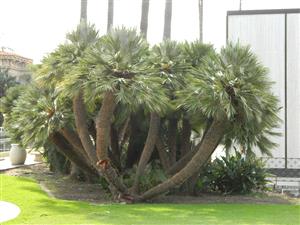
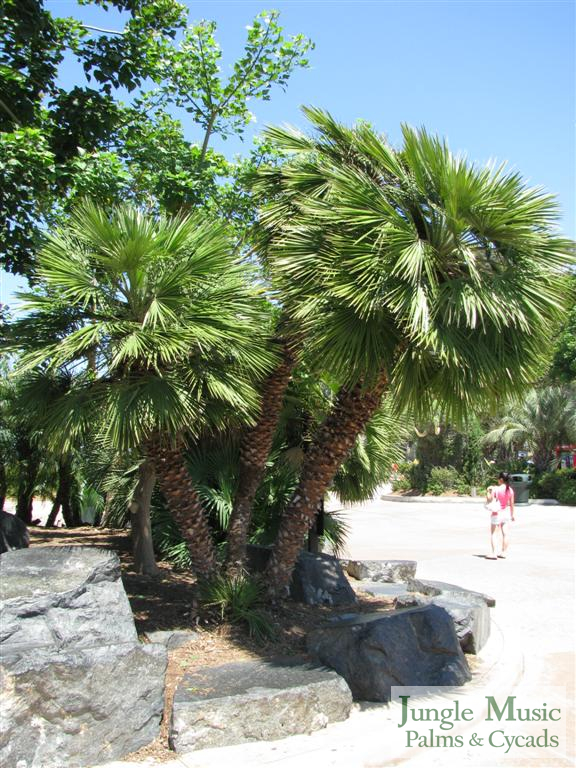
CHAMAEROPS HUMILIS
Common Names: The Mediterranean Fan Palm, The “Med Fan”, The European Fan Palm
Type of Plant:
This is a suckering, armed fan palm.
The Genus:
From a taxonomic point of view, this is the only species of the genus Chamaerops. See comments above.
Sun Tolerance: This species prefers full sun and is very tolerant of high heat, even in the desert. It does poorly in shade or in a filtered light interior environment. During the winter it does tolerate humid cold weather as you would see in its native habitat.
Mature Height:
There are various clones of this species, some shorter, some taller. Figure the heights at anywhere between six feet and fifteen feet.
Leaves:
The leaves are of the fan type with divided segments. Leaf segments come to a point but are not sharp. Typical leaf diameter is two feet, perhaps a bit more.
Leaf Stem:
Depending on conditions, the petiole (leaf stem) can be between two and five feet long. It is armed with sharp barbs.
Leaf Color:
Leaf color in green to blue green. Often the underside of the leaf is more silver than the top side although this is variable. There are intensely blue forms of this plant given the name Chamaerops cerifera. The latter may soon be given species status.
Trunk:
The trunk is typically six to eight inches thick and has retained leaf bases and fibers. Thus, it is not a smooth trunk palm. With the fiber and old stems attached, a trunk may look like its twelve inches thick.
Suckers:
This species produces addition trunks off the primary trunk. These offset trunks are densely attached and close together.
Spines:
It is important for the reader to realize there are curved and rather sharp spines on the leaf stems. Use protective gloves when pruning. Protect your eyes with goggles as well.
Cold Tolerance:
This species is remarkably cold hardy and is on a short list of the world’s most cold hardy palms. It can usually tolerate 15 degrees F. weather
Fruit:
Fruit turns from green to yellow-brown over time. The seed inside is brown and about 1/2 inch in size.
Growth Rate:
Medium growth rate. Not super slow but certainly not fast.
Native Habitat:
As mentioned above from most of the coasts of the Mediterranean Sea and on islands within this sea.
Landscape Usages:
This species should be given room as it can be as wide as it is tall. This is because of the suckering nature of this species. It should be considered where one experiences severe cold or where one has extreme summer heat. It can be used as a specimen, centerpiece palm but may need a decade’s growth to mature to this size. If a smaller clone is picked, it can be used where views are a concern. Typically it allows a view above the crown of leaves.
Varieties and Clones:
Chamaerops cerifera is the blue form from northern Africa and may someday be considered a species. However, there are also varieties that come from particular habitats and are known to be smaller, more compact or have somewhat different appearance or leaf characteristics. This will not be covered here but some nursery photos shown below.
Single Trunk Form:
A peculiar and very rare form of this species does not sucker. It only has one main stem and never produces offset stems. We do not know why this occurs. See photos below. One can remove stems from a clustering form but the plant will typically keep producing more stems over time. The single trunk form never does this.
See photographic representation of this species and nursery plants below.
PHOTOS OF THE MEDITERRANEAN FAN PALM (CHAMAEROPS HUMILIS)
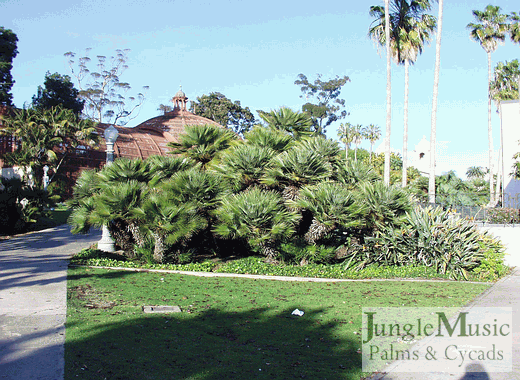
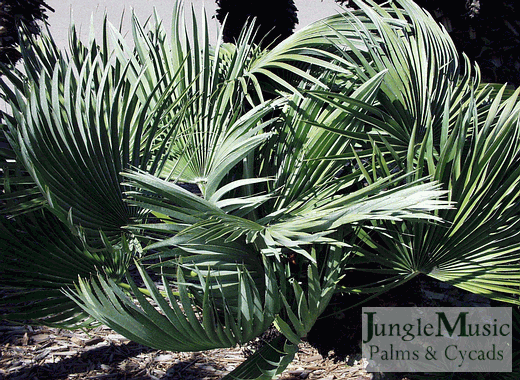
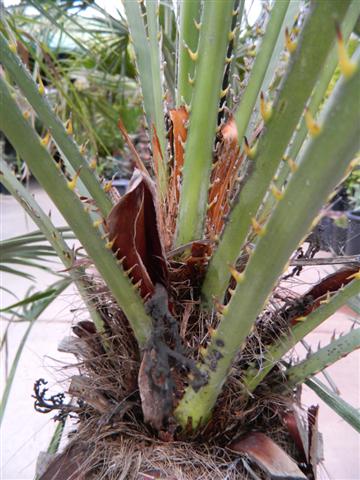

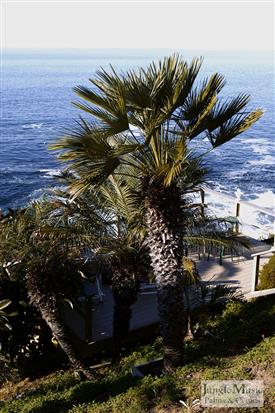
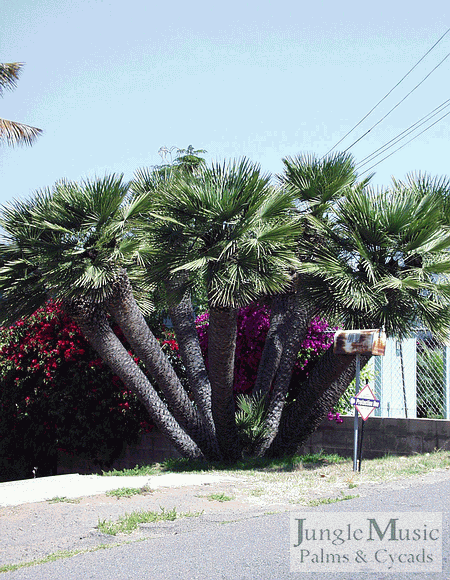
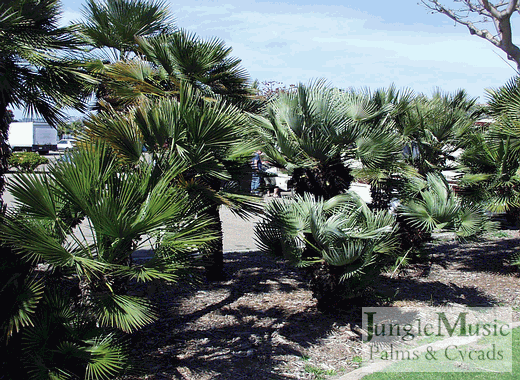
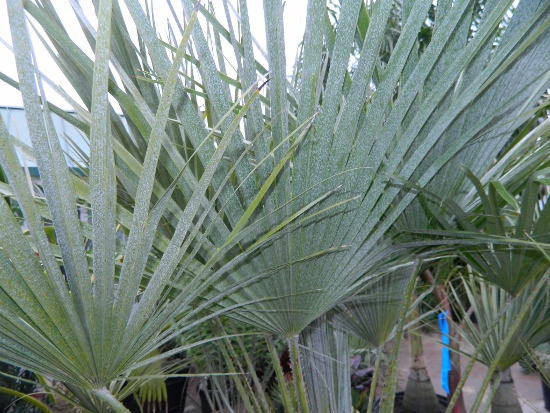
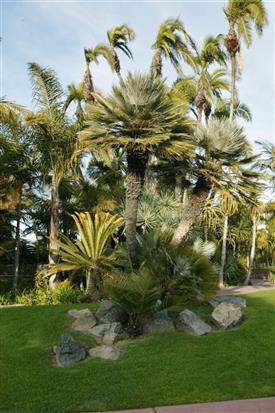
MEDITERRANEAN FAN PALMS AT THE NURSERY
Availability can change over time. Typically we have 5g and 15g available. But, we can get large boxed specimens on request (require heavy equipment to move).
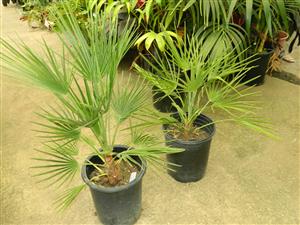
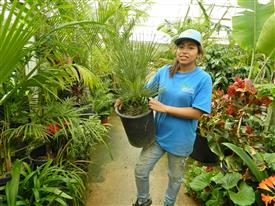
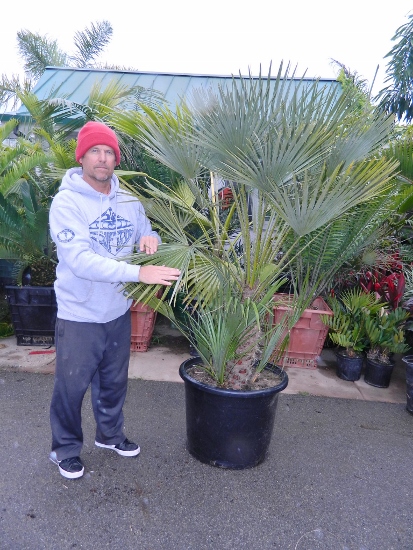


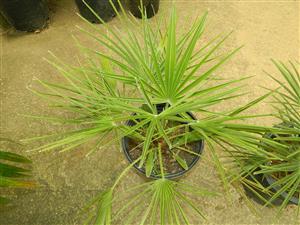
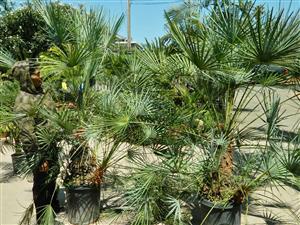
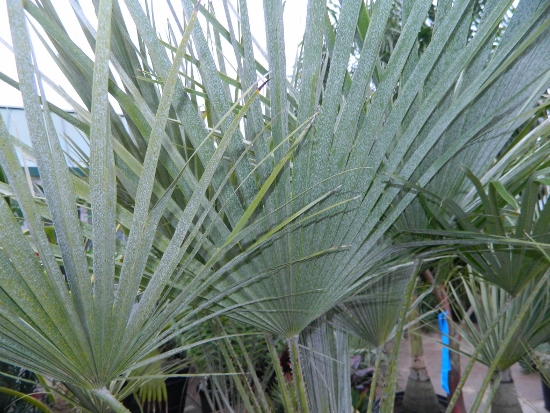


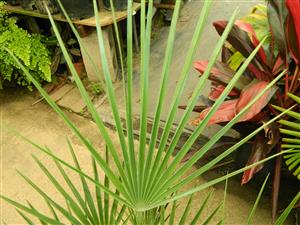
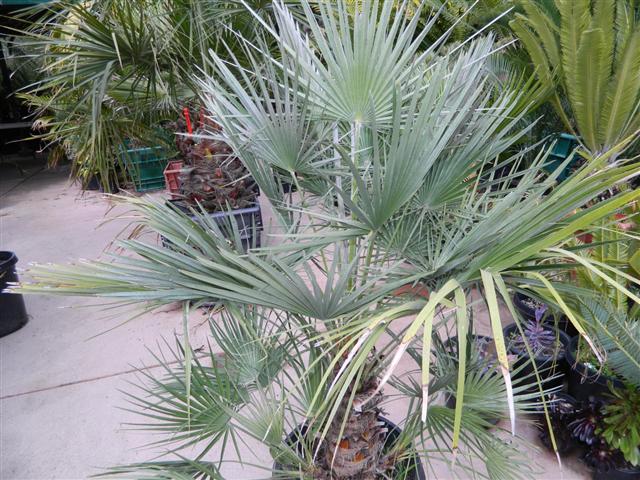
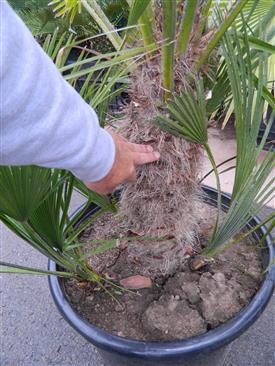

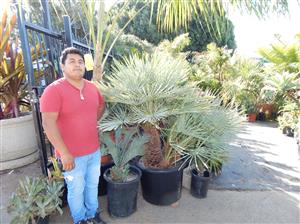
LARGE SPECIMENS ARE AVAILABLE THROUGH ASSOCIATE

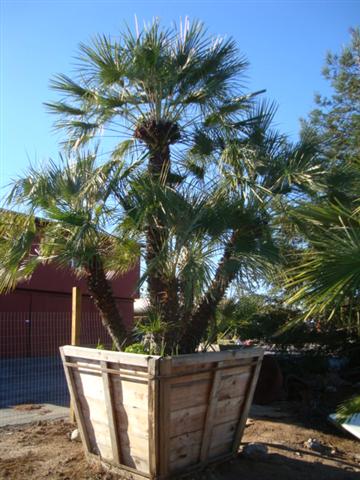

- PALM TREES, CYCADS & TROPICAL PLANT BLOG - October 1, 2020
- TRACHYCARPUS
The Windmill Palm - September 30, 2020 - FAN PALMS –
PALMS WITH CIRCULAR LEAVES - September 29, 2020












